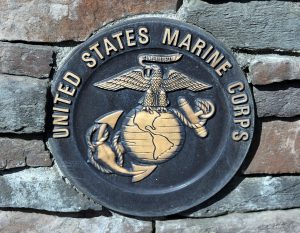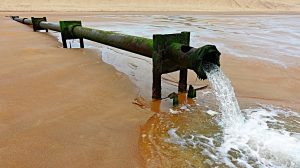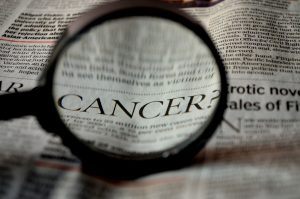 It’s been a few months since President Biden signed the Camp Lejeune Justice Act of 2022 (CLJA) into law. I’ve written several posts discussing this new law, but none of those posts have gone into detail about how and why the drinking water at U.S. Marine Corps Base Camp Lejeune caused so much harm to so many individuals for so long. Camp Lejeune water contamination, sadly, occurred for decades, and it’s important to understand how it happened and how it hurt people. In this blog post, we’ll examine:
It’s been a few months since President Biden signed the Camp Lejeune Justice Act of 2022 (CLJA) into law. I’ve written several posts discussing this new law, but none of those posts have gone into detail about how and why the drinking water at U.S. Marine Corps Base Camp Lejeune caused so much harm to so many individuals for so long. Camp Lejeune water contamination, sadly, occurred for decades, and it’s important to understand how it happened and how it hurt people. In this blog post, we’ll examine:
- How the water got contaminated
- What chemicals or toxins contaminated the water
- What health effects resulted from the contamination
Where Did the Camp Lejeune Drinking Water Become Contaminated?
There were multiple locations. According to the Agency for Toxic Substances and Disease Registry (ATSDR), the finished water (water used for drinking, cleaning, bathing, etc.) at Camp Lejeune came from the following eight water-distribution plants:
- New River
- Hadnot Point
- Tarawa Terrace
- Holcomb Boulevard
- Courthouse Bay
- Rifle Range
- Onslow Beach
- Montford Point/Camp Johnson
The ATSDR reports that only the following three water-distribution plants were contaminated with high levels of harmful chemicals: Hadnot Point, Tarawa Terrace and Holcomb Boulevard. However, Hadnot Point and Tarawa Terrace suffered the worst contamination.
Water Contamination at the Hadnot Point Water-Distribution Plant
The Hadnot Point water source provided water to several locations, such as Mainside Barracks and several family housing locations (Berkeley Manor, Hospital Point, Paradise Point and Midway Park).
 The primary contaminant in the water was trichloroethylene (TCE), but other contaminants included perchloroethylene/tetrachloroethylene (PCE), benzene, vinyl chloride and trans t-1,2-dichloroethylene (DCE). These chemicals came from various sources, including waste disposal sites, underground storage tanks and chemical spills from industrial locations.
The primary contaminant in the water was trichloroethylene (TCE), but other contaminants included perchloroethylene/tetrachloroethylene (PCE), benzene, vinyl chloride and trans t-1,2-dichloroethylene (DCE). These chemicals came from various sources, including waste disposal sites, underground storage tanks and chemical spills from industrial locations.
To give you an idea of how bad the contamination was at Hadnot Point, in 1982, the TCE levels in the drinking water was 1,400 parts per billion (ppb) even though the allowable limit was just 5 ppb. That’s 280 times the allowable limits. Which is horrifying.
Water Contamination at the Tarawa Terrace Water-Distribution Plant
The Knox Trailer Park and Tarawa Terrace family housing unit were major users of water from the Tarawa Terrace water-distribution plant. The main contaminant found in the water was PCE, which came from an off-base dry cleaning business.
In 1985, PCE was detected in the water from Tarawa Terrace at a concentration of 215 ppb, although the allowable limit was 5 ppb.
Water Contamination at the Holcomb Boulevard Water-Distribution Plant
The water contamination at this location is believed to be less severe, as much of the contaminated water used in the Holcomb Boulevard drinking system came from Hadnot Point. Despite the smaller amount of contamination, the level of chemicals in drinking water, such as TCE, PCE and DCE, is believed to have significantly exceeded allowable limits.
What Health Problems Were Caused by the Chemicals in the Camp Lejeune Water?
 The human body is complex and there are often various factors that determine whether someone gets sick after exposure to something harmful. That being said, there’s plenty of research that explores the risks of exposure to many of the chemicals found in the Camp Lejeune drinking water. But factors that could affect how these chemicals harm people include:
The human body is complex and there are often various factors that determine whether someone gets sick after exposure to something harmful. That being said, there’s plenty of research that explores the risks of exposure to many of the chemicals found in the Camp Lejeune drinking water. But factors that could affect how these chemicals harm people include:
- Amount of exposure (how much of the toxin was in the water you were exposed to)
- Method of exposure (inhalation of water vapor containing contaminants versus having it touch your skin or drinking it)
- Duration of exposure (how long you were on base)
- At what point in your life you were exposed (as a baby versus as a child or adult)
- Your personal characteristics (such as eating and exercise habits, as well as genetics and family history)
Even though the exact cause of a specific health issue in a particular individual can be complex, scientific research can still conclude that certain health effects are caused by certain chemicals.
The ATSDR states that there’s sufficient evidence to conclude that the following chemicals found in the contaminated water at Camp Lejeune cause the following health problems:
- TCE: Cardiac defects, Non-Hodgkin’s lymphoma and kidney cancer
- PCE: Bladder cancer
- Benzene: Leukemia and Non-Hodgkin’s lymphoma
- Vinyl chloride: Liver cancer
There are other health problems that the ATSDR recognizes are linked to a specific toxin:
- TCE: Leukemia, liver cancer, multiple myeloma, end-stage renal disease, Parkinson’s disease and Scleroderma.
- PCE: Non-Hodgkin’s lymphoma and end-stage renal disease
- Benzene: Multiple myeloma
Finally, there are health problems that have positive associations between an ailment and exposure to a specific chemical.
- TCE and/or PCE: chonal atresia, eye defects, low birth weight, fetal death, major malformations, miscarriage, neural tube defects, oral cleft defects, small for gestational age, breast cancer, cervical cancer, esophageal cancer, lung cancer, ovarian cancer, prostate cancer, rectal cancer, Hodgkin’s disease, impaired immune system function, neurological effects, neurobehavioral performance deficits, severe, generalized hypersensitivity skin disorder
- Benzene: Miscarriage, aplastic anemia and myelodysplastic syndrome
- Vinyl chloride: Brain cancer, lung cancer, liver cirrhosis and soft tissue cancer
Conclusion
One or more of your health problems may have been caused by exposure to contaminated water at Camp Lejeune. But if you want to receive compensation for your injuries, you’ll have to provide evidence to support your claims. Depending on your situation, it might be a good idea to have a competent injury attorney help you with this process.
If you have any questions, feel free to give my firm a call at 919.546.8788. I’ll do my best to help you.
 North Carolina Product Liability Lawyer Blog
North Carolina Product Liability Lawyer Blog

